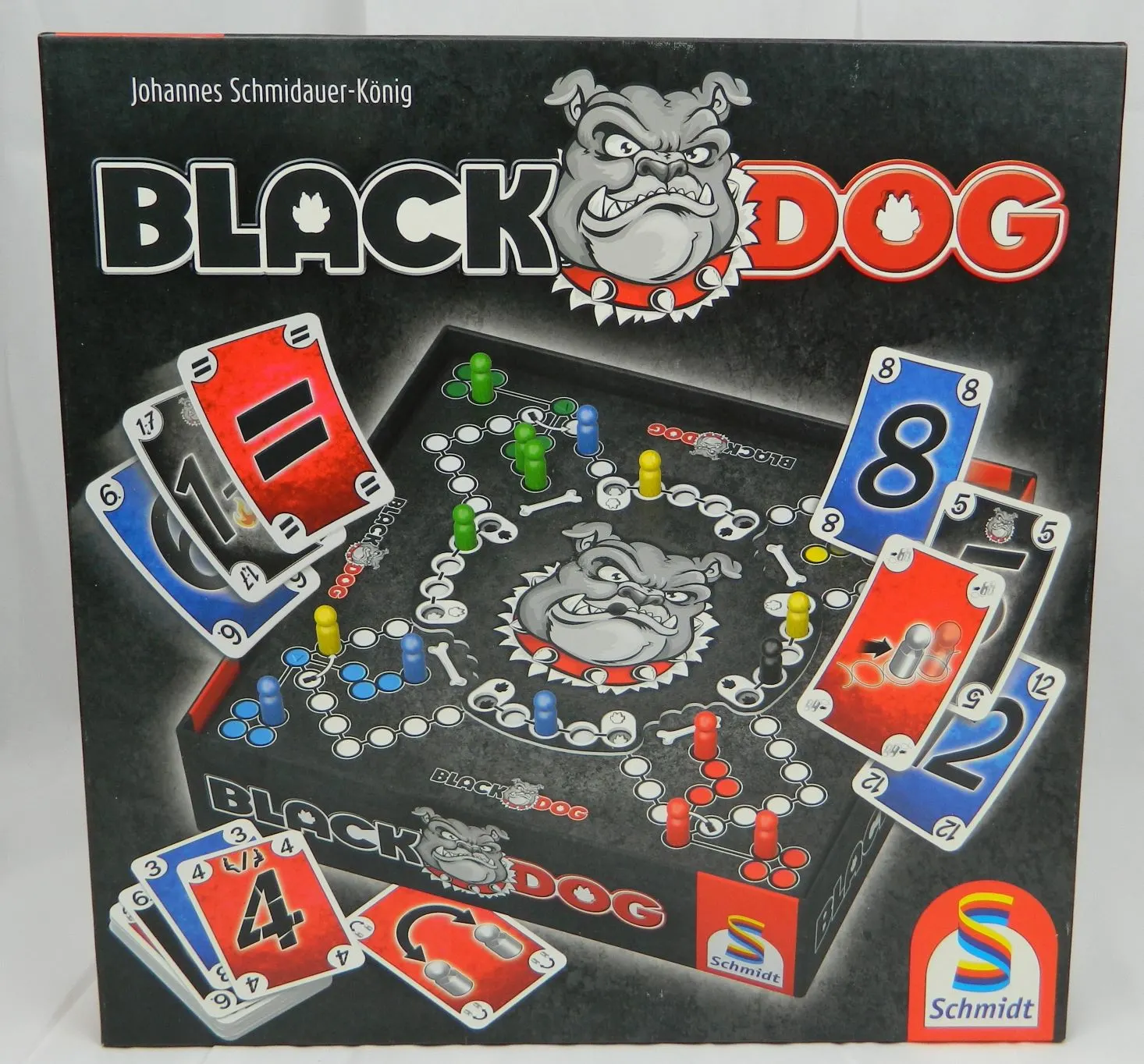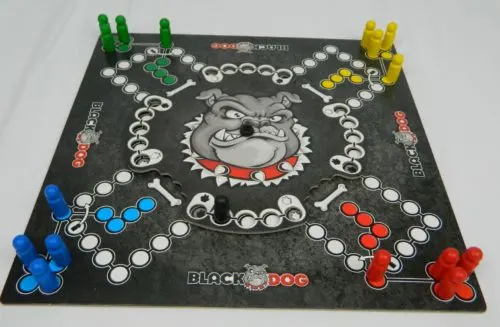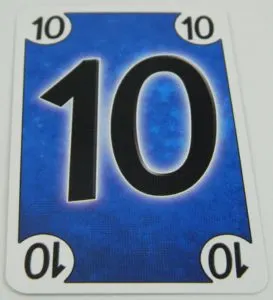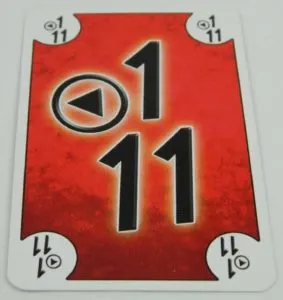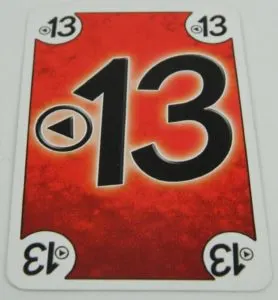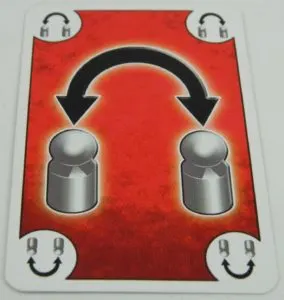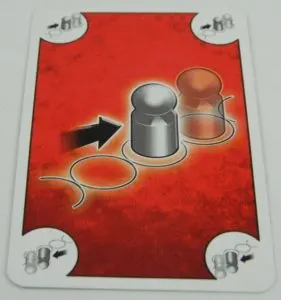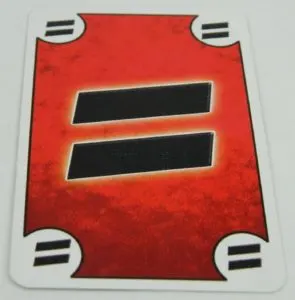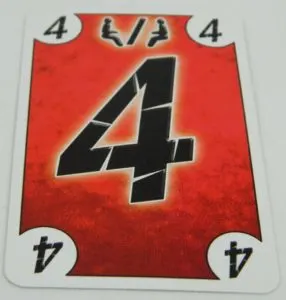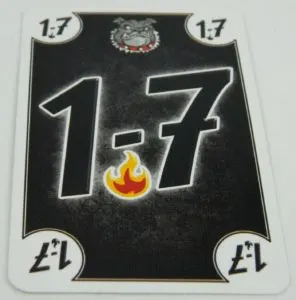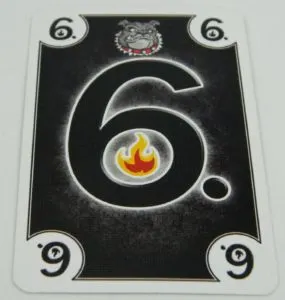Pachisi is arguably one of the oldest board games that have not been lost to time. The game has lasted for over 1,000 years for a number of reasons most notably because of its simplicity making it a game that is easy for the whole family. While you may have never played Pachisi, there is a good chance that you have played a game that was inspired by it as there have been a lot of games that have utilized the same basic gameplay. Some games that have utilized the formula include Parcheesi and Sorry!. A version that appears to be more popular in Europe is called Dog. Today I am looking at Black Dog which is a twist on Dog. While I didn’t hate Parcheesi, I wasn’t a huge fan of the game’s reliance on luck. This is what initially intrigued me about Black Dog as the game actually seemed to add some strategy to the formula. Black Dog adds a surprising amount of strategy and interesting mechanics to your traditional Pachisi/Parcheesi gameplay which unfortunately leads to some of its own problems.
How to Play Black Dog
Setup
- The players will divide into two teams. Teammates will sit across from one another so each team alternates turns.
- Place the gameboard in the middle of the table. Position the wheel so that all of the bones are visible on the board.
- Each player takes the pawns of their color and places four of the pieces in their reserve location. The fifth pawn is only used in two and three player games.
- One player will be chosen to be the dealer. The dealer will shuffle the cards and deal five cards face down to each player. The rest of the cards will be passed to the player on their left who will be the dealer for the next round.
- To begin the game each player is able to place one of their pieces on their start space.
- The player to the left of the dealer will be the start player. The player to the right of the start player will place the Black Dog piece on one of the spaces on the wheel.
Playing A Round
At the beginning of each round each player will pass one of their cards face down to their teammate. Players should give their teammate a card that they think will help them.
Starting with the start player each player will get to play one of the cards from their hand. They will then take an action based on the card that they played. See the Cards section for an overview of what every card does.
If a player can’t use any of their cards to move one of their pieces, they will show their cards to the rest of the players so they can verify that they couldn’t play any of their card. They will then discard all of their cards and will forfeit their turn for the rest of the round.
The current round ends when all of the players have no cards left in their hand.
In the next round the player with the deck of cards in front of them will deal out five new cards to each player. They will then pass the deck to the next player to the left.
Moving Pieces
The journey of each playing piece begins on a player’s start space. To add a piece to the board you need to play a start card (see Cards section). When a piece is on its own start space, it blocks any other piece from moving through that space. The Black Dog ignores this rule as it uses the shortcut before the start spaces as shown on the gameboard. The piece is also safe where it can’t be captured or swapped.
When a player plays a card with a number on it, the player will choose one of their pieces that are out on the board to move. Pieces are moved clockwise around the board. A piece has to be moved the full amount of the card that is played. Pieces can pass other pieces as long as they are not on their own start space.
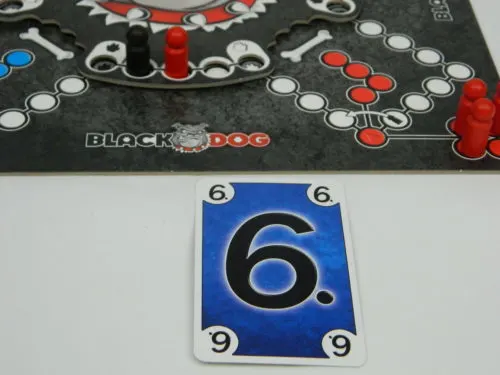
The red player has played a blue six card. They moved one of their pawns six spaces clockwise around the board.
If a piece lands on a space that is already occupied (not including the Black Dog), the piece that was previously on that space is captured and returned to its reserve area. The one exception to this rule is if a piece is on its own start space.
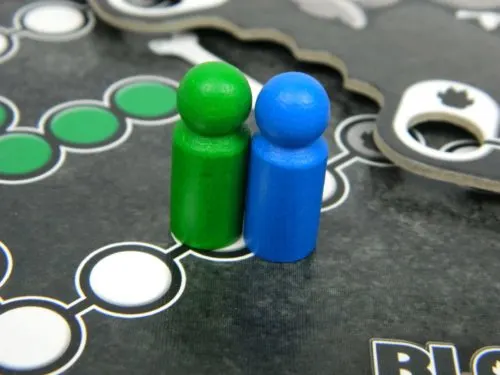
The blue player has landed on this space that was already occupied by the green player. The blue player will stay on the space and the green player will be sent back to their reserve area.
If a player can play a card they must play it before the round ends. If this should move a piece past a player’s home, the piece will have to make another trip around the board.
Moving Home
Once a piece has made a trip around the board it can be moved into its home spaces. Once a piece is on a home space it is safe and can no longer be captured or swapped. A piece in home cannot be passed over.
A piece that starts the turn on its start space cannot be moved onto a home space.
Turning The Wheel
Whenever a player lands one of their pieces on a paw space (does not include the Black Dog) the wheel will be spun. The player will turn the wheel 90 degrees clockwise or counterclockwise. An easy way to tell if you turned the wheel far enough is to turn the wheel until your piece is on a new space featuring the same colored paw as the space you originally landed on. The wheel won’t be turned until a player has completed their turn. Once you start turning the wheel you can’t change the direction that you are turning it.
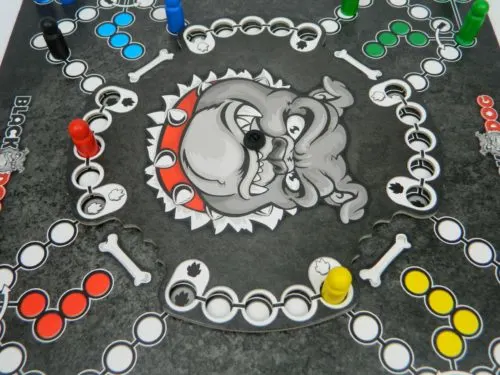
The yellow player has landed on one of the white paw spaces on the wheel. They will get to turn the wheel clockwise or counterclockwise until their pawn is positioned on the next white paw space.
If a player ends up landing on a paw space due to a switch, they will not turn the wheel. If a player lands on a paw due to a magnet though, they will turn the wheel.
Cards
Blue Cards
All blue cards will feature a number. The player will move one of their pieces clockwise the number of spaces shown on a card. If this would violate movement rules, the player cannot play the card.
Red Cards
1/11: This card gives the player who plays it three options. First the card can either be used as a one or an eleven. Otherwise the card can be used to move a piece from a player’s reserve area to their start space.
13: This card can be used as a thirteen movement card. Otherwise it can be used as a start card to move a player’s piece to their start space.
Switch: When this card is played the player will choose one of their pieces to swap with either an opponent’s piece or one of their teammates. If there are multiple options the player who plays the card will choose which piece to swap positions with. A piece has to be on the board and not on their own start space or home in order to be eligible to be swapped. A player cannot swap positions with the Black Dog. This action has to be done even if it hurts the player that played the card.
Magnet: The player who plays a magnet card will choose one of their pawns that are on the gameboard. They will then keep moving the piece until it is on the space directly behind the next piece clockwise on the board (this includes the Black Dog). This card cannot be used to move a piece home or move it up spaces in their home section. For this card to be played a piece has to be moved at least one space.
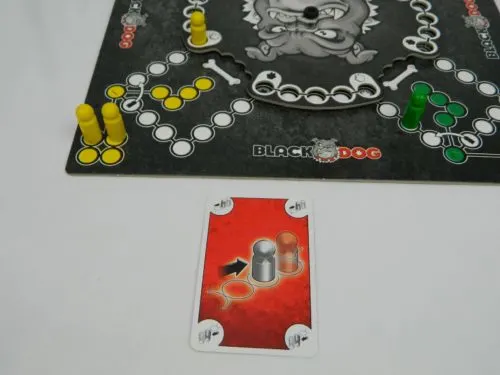
The green player played the magnet card. As the yellow pawn is the next pawn clockwise from their piece, the green pawn will be moved until it is one space behind the yellow pawn.
Copy: When a copy card is played it will copy the last played card (not allowed as the first card of a round). When the card copies a card that has multiple different options, you can choose a different option than the previous player. If a copy card is played after another copy card, it will copy the affect of the card played before the other copy.
Partner: This card will give a player four movement points. The player can divide these points between their own pieces and their partners however they want. All four points must be used though. If a player has already brought all of their four pieces home, the player can use the four points to move their teammates pieces and/or the opponents’ pieces.
Black Cards
1-7: The player that plays this card will move one of their pieces between one and seven spaces. The Black Dog piece will then be moved the same number of spaces. This card can’t be played if you can’t move any of your own pieces.
5/6: These two cards will first move one of your pieces five or six (depending on the card) spaces. The Black Dog will then move the same number of spaces. If you can’t move one of your own pieces, you can’t play either of these cards.
Black Dog
The Black Dog (black piece) will be moving around the board along with the player’s pieces. Any player piece that the Black Dog lands on or moves through will be returned to the player’s reserve. If a player moves onto or through the space occupied by the Black Dog, their piece will also be sent back to their reserve.
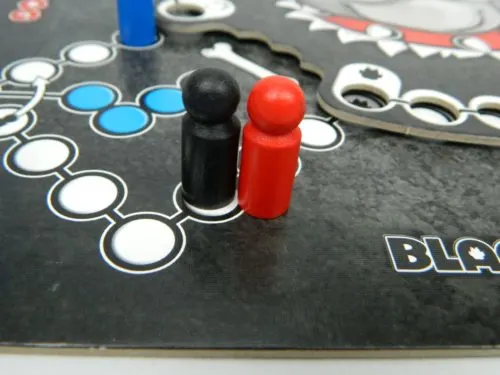
The red player’s piece is on the same space as the Black Dog. The red player’s pawn will be sent back to their reserve.
Some rules regarding the Black Dog:
- It cannot be switched or captured.
- It will skip all starting spots as shown on the board.
- It will not activate the turning of the center wheel.
End of Game
The ultimate goal of the game is to get all of yours and your partners pieces to their home spaces. Once a player gets all four of their pieces home, they will start to help their partner. They will still be dealt cards and take their turn, but all cards will be played for their partner’s pieces. Players may never discuss strategy with their partner during the game.
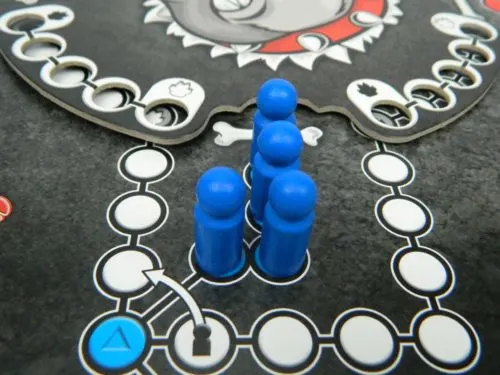
The blue player has gotten all four of their pawns to their home. They will now help their teammate get their pieces home.
The first team to get all eight of their pieces home will win the game.
Two and Three Player Games
Here are the rule changes for two and three player games.
- All players will play for themselves.
- Players will use all five of their playing pieces.
- To begin the game the fifth piece starts on the start space.
- If all of a player’s piece should be captured at the same time, the fifth piece will be placed next to the start area.
- If a player can’t play one of their cards on their turn, they will discard one of their cards and draw a new one from the draw pile. If they can’t play this card either, they will discard another card and their turn will end.
- The “artner” card’s four spaces can always be spread between a player’s pieces and the other players’ pieces.
- To begin each round a player will give one of their cards to the player on their left.
- The first player to bring four of their playing pieces home wins the game.
My Thoughts on Black Dog
On the surface it is pretty obvious that Black Dog was inspired by Pachisi and the many other games in this genre. The basic gameplay is exactly the same as the goal is to move your pieces from your start space to your home spaces. While moving around the board you can send other players’ pieces back to their start by landing on them. The idea of using cards instead of dice is not all that original either as games like Sorry! have been using them for quite a while. Black Dog does have a couple little tweaks that do tweak the formula in some interesting ways though.
While it might not seem like much at first, but I think the most interesting addition to the game is the fact that each player has a hand of cards that they can choose from on their turn. This rule actually comes from the game Dog and is actually a common house/variant rule for games like Sorry!. Honestly one of the biggest issues with most Pachisi style games is that they end up relying on a lot of luck. What numbers you roll/cards you draw determine what you can do on your turn. If you have two or more pieces in play you can choose which to move, but otherwise your actions are mostly determined by what numbers you are assigned.
Having a hand of cards might not seem like much at first, but it actually adds more to the game than you would initially expect. The main thing that it does is gives players choices. Instead of being stuck with the card that is dealt to you, you actually get to choose which you would like to play on your turn. Black Dog will never be considered a highly strategic game, but it has considerably more strategy to it than most of these type of games solely due to being able to choose which card you want to play on your turn. This simple change makes Black Dog feel like an advanced version of these other games. There are some limitations as you have to use all five of the cards that you are dealt before you get new cards, but you are given more choices that you would typically get from these type of games. This helps reduce the game’s luck in some ways while also making you feel like you have more control over your own fate. Because of this I generally liked the addition.
This change does introduce some of its own issues though. While having more strategy does give you greater control over your own fate, the drawback is that it can lead to some analysis paralysis. In most of these games you have few if any choices to make which made turns move quickly. You have considerably more to consider in Black Dog though especially early in rounds. This leads to turns taking longer as players consider their options. For a game that is so simple you wouldn’t think that it would have a lot of analysis paralysis, but it can at times. Players prone to the issue can take a decent amount of time analyzing all of their options. While I appreciate having more strategic options, this added length feels out of place in this type of game. To enjoy the game to the fullest you need to really implement some sort of time limit to keep players moving instead of analyzing every single option.
While the addition of a hand does reduce some of the luck, it still relies on quite a bit of luck. There was no way that all of the luck could be removed as you are drawing cards where some will be more beneficial than others. The order and how you choose to use your cards will have an impact on how well you will do. Luck still plays its role though as you can’t overcome it no matter how good your strategy is. Some of the cards are better than others, but it is mostly about getting the right cards at the right times. You need the exact right numbers to bring pieces home or to bring pieces out to your start space. If you don’t get these cards you may be forced to go around the board another time or even be stuck missing out on several of your turns. If luck is not on your side, there really is no way that you can ultimately win the game.
Outside of getting a hand of cards, there are a couple other additions to Black Dog. The most notable is the addition of the Black Dog. The Black Dog is basically a neutral pawn that you need to avoid at all costs or it will send you back to your start. This is an interesting idea as it gives you another thing that you have to consider before you make your move. I actually don’t mind the mechanic in theory. The problem with it is just that the dog doesn’t move all that often. Maybe it was just the cards that we ended up drawing, but it seemed to act more like a roadblock that you tried to avoid instead of it actively chasing players. This meant the dog impacted some players considerably more than others. Ultimately I didn’t have strong feelings either way about this mechanic.
The next addition is the fact that the center of the board rotates. While this doesn’t play a huge role in the game either, I thought it was an interesting little addition. It gives you another thing to consider when moving as you can use it to either really speed up your path around the board or really mess up another player. In general I thought this was a good addition as it doesn’t really make the game any more complicated, while adding in a little twist that makes the game more interesting.
The final addition to the game is the fact that in four player games you will play in teams. I will say that this usually doesn’t play a huge role in the game until one of the players has gotten all of their pieces home. You mostly just pass cards to your teammate which you think they could use. Once one player has gotten all of their pieces home though, it plays a pretty big role as both players have to play cards together that will get the remaining pieces home. This can actually be quite difficult as the players aren’t able to discuss strategy in any meaningful way. While you could use the card passing mechanic to maybe help you get your last piece home, you are just as likely to end up messing things up forcing you to go around the whole board again. I thought this was an interesting twist. I think players should have been able to share a little more information, but it tweaks the game enough to keep things interesting.
While Black Dog adds a decent amount to your typical Pachisi/Parcheesi game, at its core it is still very similar to the other games that utilize the same basic gameplay. This means that if you have already played one of these type of games, you likely will already have a good idea of what to expect from the game. The game is still really easy to play where the whole family should be able to play it. While it has more strategy than you would initially expect, it isn’t a brain burner either. Thus it should still work well as a game that you can enjoy without putting too much thought into what you are doing. It isn’t a highly strategic game though and still relies on a lot of luck which will turn off some players.
As for the game’s components I would say that they are solid. The game utilizes a more basic graphical design that works pretty well for the game. The gameboard is pretty thick, and the wheel element works a lot better than I would have expected. The game comes with quite a few cards where you probably will only have to reshuffle the cards once during a game. The pawns are generic looking, but I appreciate that they are made out of wood. The components aren’t going to blow you away, but they do their job well enough where you won’t have any issues with them.
Should You Buy Black Dog?
Heading into Black Dog I didn’t know exactly what to think. The game was clearly inspired by games like Pachisi which I thought were okay, but nothing special. What initially intrigued me about the game was the fact that it appeared to have more strategy than most games from this genre. As players have some choice over what cards they play, this gives players more options and thus allows you to implement a sort of strategy. This somewhat reduces the game’s luck even though it can still be pretty prevalent at times. It also seems to extend the game though as players have much more to consider before making a decision. Other than the increased hand size the game adds a number of mechanics which are interesting but don’t play a huge role in the game. Ultimately Black Dog is not a particularly deep game, but it is simple enough that the whole family can enjoy it.
My recommendation for Black Dog actually relies quite a bit on your opinion of Pachisi and other similar games. If you don’t particularly care for that type of game or are looking for a deeper game, Black Dog likely won’t be for you. If you generally like the concept of a game like Pachisi but wish it had a little more strategy though, the game might be exactly what you are looking for.
Buy Black Dog online: eBay. Any purchases made through these links (including other products) help keep Geeky Hobbies running. Thank you for your support.

